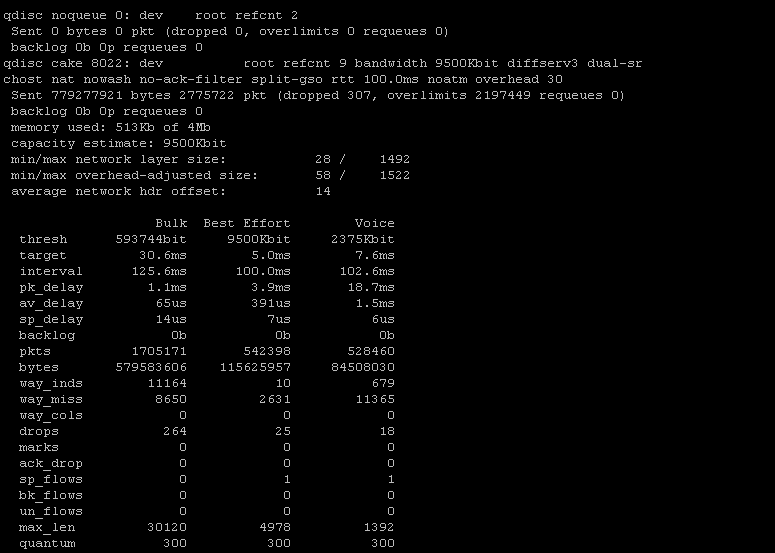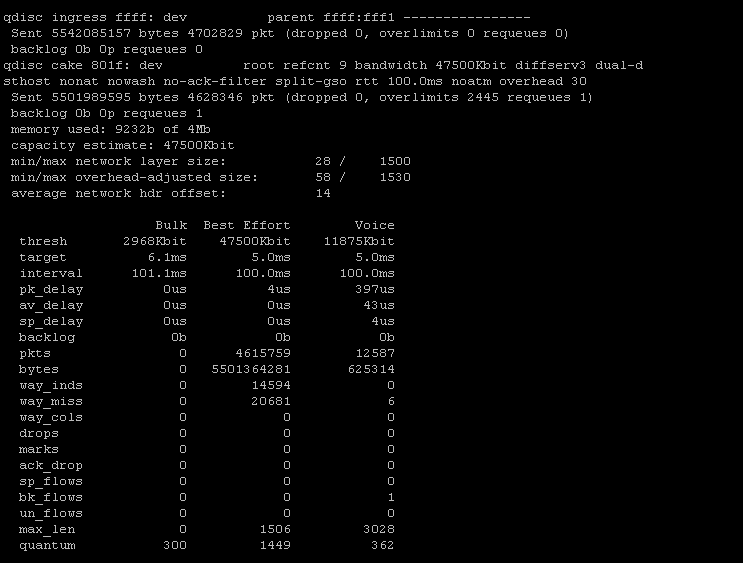I feel like in some way my dnsmasq/ipsets post kicked a hornets nest here. Perhaps I am misreading the correlation, too. It certainly was not my intention to stir things up, if that was related.
Regardless, my interest in Nftables is in no way meant to be a jab at anyone’s blood, sweat, and tears that have gone into making iptables + SQM the awesome combination it is currently. I would wager most would agree with that sentiment. Speaking for myself, I am a tinkerer and find enjoyment in fiddling with new, often "bleeding edge" stuff. Yeah, I want my internet connection to work well, and it does, but seeing if I can make it run even better is a motivation that has turned into somewhat of a hobby of mine.
Back to the matter at hand, I certainly do not want to see betterment of iptables taking a hit at the expense of nftables. Iptables is out there, all over the place, and it should continue to get attention. I am sorry to hear of the stalled development because of 'new hotness'. But, it is the nature of IT for "things" to iterate and [hopefully] improve. We all know that does not happen by sticking to one platform/tool/ecosystem forever, no matter how good it is today. Otherwise, we would all still be using "operating systems" like GEOS and trying to reach outside our own four walls with 300 baud modems. Yes, those things worked at the time, but thankfully tinkerers around the world decided not to stay with "good enough" forever.
Please know I am not trying to lecture anyone here. I am furthest from the smartest person in this virtual room. On that point, I will admit it right here and now... I have a hard time understanding the intricacies of iptables. Heck, I have a hard time even understanding the basics of it at times. I mean no offense to anyone reading this, but iptables syntax seems complicated. I work in IT and can develop in multiple languages. But, for some dang reason, iptables confounds me at times. I can look at nftables syntax now after only about a week of reading up on it and I get it. It just makes sense to me. Maybe not to everyone else, but that leads me to my next point.
Options. I would like to see nftables get to the point of being equivalent to iptables. Whether that's next month or years from now--and I'm sure it will. But I think it's important for there to be options. For those that get iptables--use the heck out of it. For those who just cannot wrap their heads around all of it, having another workable alternative might be a better fit. I am not proposing advancement of nftables be at the cost of iptables, but I would like to see people continue to tinker with nftables and figure out what needs to happen to make it feature-equivalent to iptables.
Wrapping this up... @ldir the work you've done to get the ctinfo_4/5layercake is flat-out awesome. I am using the ctinfo_5layercake configuration now and it is the finest I have ever seen my internet connection operate at. The improvement in responsiveness is great. I have the utmost respect for you, and many others here, and I am 100% behind @moeller0's suggestion to "make lemonade"  At the end of the day, I do hope those others like @dlakelan will continue pursuing ways to help make nftables more well-rounded to bring parity to the amazingness that SQM + iptables is today.
At the end of the day, I do hope those others like @dlakelan will continue pursuing ways to help make nftables more well-rounded to bring parity to the amazingness that SQM + iptables is today.
Sincerely hoping for no hard feelings here. 
P.S. You might find it "interesting" to note that NAT modules appear to be missing for nftables in the latest kernel 5.4 builds at the moment: [kernel 5.4.x | nft] NAT not working due to missing kmods 
 At the end of the day, I do hope those others like
At the end of the day, I do hope those others like 





